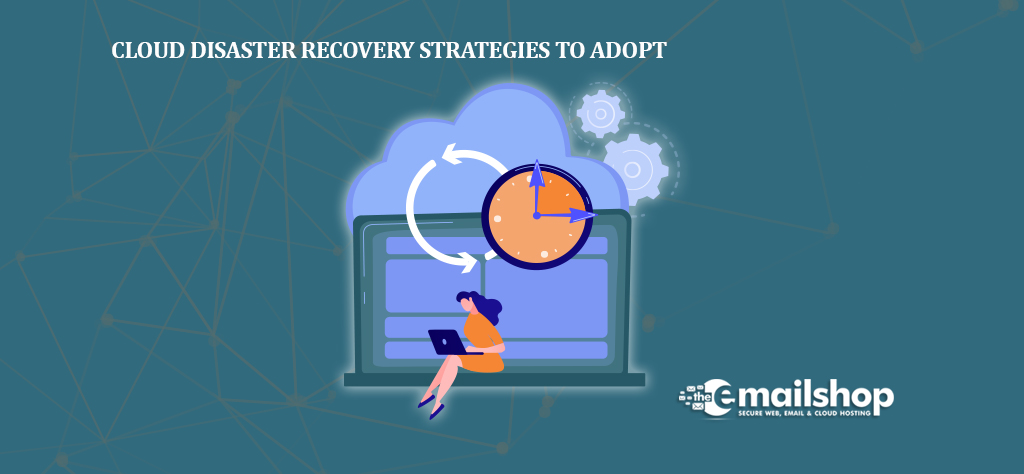A disaster is an event that affects the commercial continuity or financial stability of a company. Failure of a system may be caused either by technical flaws or by humans acting maliciously to attack or hack the system. They are severe enough to bring essential business operations to a stop or cause interruptions for a lengthy period of time. The act of both preparing for and recovering from the effects of a disaster is referred to collectively as “disaster recovery.”
A company has to be able to quickly obtain access to its critical information technology (IT) systems after a major disaster, which is why a disaster recovery cloud computing plan was developed. To be ready for something like this, businesses often conduct comprehensive reviews of their systems and develop official documents (DR) that must be adhered to during times of crisis.
Therefore, cloud disaster recovery plans are practices and methods that ensure the continuous functioning of a business. This is accomplished with the assistance of specific cloud provider capabilities.
Through the use of cloud disaster recovery, the reliance on physically located infrastructure may be decreased. The operations of a company may be made more efficient via the use of disaster recovery in cloud computing services that are outsourced. In addition, a company would not have to modify or maintain its physical infrastructure in order to recover data from a distant site in the event of a catastrophe. The elimination of human mistakes via the use of automation is one of the many advantages offered by cloud-based information management systems.
In addition to this benefit, cloud-based disaster recovery is simpler to implement than on-premises disaster recovery. Therefore, businesses are free to mix and permute a number of different recovery tactics without having to give up the services they need. Figure 1 shows the cloud disaster recovery plan.

The following is a list of the top cloud disaster recovery solutions that should be used in the present era.
-
Carry out an investigation into the business
A Business Impact Analysis can help you understand the constraints that will be placed on the operations of your company in the event of a disaster. When developing a plan for the company’s disaster recovery, the RPO and RTO should be the most key parameters to consider. RPO stands for recovery point objective, and RTO refers to recovery time objective. Both of these approaches assist firms in carrying out their day-to-day operations without experiencing any disruptions.
RPO is the maximum period of time during which you may tolerate the loss of data from your application as a result of a significant emergency. On the other hand, RTO is the maximum amount of time that your application may be unavailable before it starts to have an impact on your company’s operations. The RTO is also responsible for ensuring that measures for disaster prevention and recovery are in order. Consequently, having an RTO and an RPO may make it easier to choose an incident management solution that would assist firms in achieving their recovery targets.
There is a wide range of forms and dimensions that risks might take. It might be a data breach in the cloud that was triggered by someone holding encryption keys hostage; it could also be an unplanned loss of data; or it could be an occurrence that renders an essential programme unavailable. A business impact analysis, often known as a BIA, is an essential component of any cloud-based disaster recovery strategy that is designed to be successful. Its purpose is to determine the possible repercussions that may arise in the event that any of the company’s activities are interrupted. The business impact analysis places more of an emphasis on the repercussions of specific processes breaking down as opposed to the reasons for those workflows breaking down or the likelihood of them breaking down.
-
Construct the Disaster Recovery Infrastructure for Cloud
Following our consultation with a cloud disaster recovery partner, we will be able to collaborate with the provider to put your idea into action and build up your DR infrastructure.
Regardless of which method of disaster recovery in cloud computing we choose, there are a number of logistical considerations to take into account, including the following:
- How many individual components of the infrastructure will be needed for the project?
- How will we copy the data up to the cloud? What method will we use?
- What are the most effective user authentication strategies and how should access management be handled?
- Which security and compliance best practices will need to be implemented in our organization?
- What preventative safety measures will we implement to reduce the likelihood of a catastrophic event occurring?
Remember! In order to guarantee that company activities run smoothly, it is essential to check that your disaster recovery plan in cloud computing is compatible with your RTO and RPO requirements.
-
Choose a reliable solution for cloud-based backups
Secure backup solutions hosted in the cloud may help businesses avoid having to pay a ransom to access their protected data and can also help reduce the amount of data that is lost. Each backup solution copies private data from personal computers (PCs) and saves it on distant servers located in the cloud. These servers may be accessed from any location with an Internet connection. An organization’s data may be kept safe and accessible at all times with the help of a cloud backup solution, which can be relied on by the organization.
-
Discover the ideal cloud platform
After developing a realistic and effective disaster plan, it is important to choose a reliable cloud service platform to help with deployment. If your organization requires comprehensive replication in the cloud, you must examine a number of aspects before selecting the most suitable partner. These aspects include dependability, usability, uncomplicated installation and recovery options, security, and recovery time.
Companies may also choose DRaaS (disaster recovery as a service) from medium- or small-sized cloud service providers. DRaaS becomes a viable option for businesses that lack in-house disaster recovery professionals.
After a cloud disaster recovery plan has been developed and recorded, businesses have to put it to the test on a regular basis to see how successful it is. During testing, it is possible to determine whether or not key data and applications can be accessed within a time range that does not negatively influence essential business processes. Auditing a disaster recovery plan in cloud computing that is hosted in the cloud may assist businesses in identifying gaps or inconsistencies in their existing disaster recovery strategy while operating in a cloud computing environment. Following the completion of the test run, it will be necessary to assess what aspects of the cloud disaster recovery approach are lacking and how those aspects should be modified in order to obtain the intended results and overcome any challenges.
A business may quickly restore access to its essential systems and its information technology infrastructure by using disaster recovery strategies. If a disaster happens and cloud-hosted data is lost, what options does an organization have to recover it? In today’s world, the cloud is the most reliable location to store data. An approach to cloud disaster recovery that has been well considered may help it avoid situations like this one. In this article, we will outline the best practices that you should keep in mind while developing a cloud disaster recovery plan in cloud computing for 2022 to guarantee that the integrity of your data is maintained around the clock.
A devastating fire occurred at OVHCloud in 2021. As a result of the close proximity of the company’s four data centers to one another, extinguishing the fire took close to six hours. Cloud services and businesses whose whole assets were housed on OVHCloud servers were greatly damaged by this calamity.
Naturally, despite occurrences such as this, businesses have not been deterred from transferring their workloads to the cloud. In point of fact, the hunger for cloud computing among businesses has significantly increased over the course of the last two years. According to a survey by Laminar, there has been a rise in the number of data breaches as a result of rapid technological improvements and sloppy security methods.
According to the findings of the poll, more than fifty percent of security professionals believed that their organizations will be the target of an attack in either 2020 or 2021. The cloud is often mistakenly perceived to be unconquerable because of its virtual nature.
However, this is a widespread misconception. Even when it is accessed through the cloud, data is still stored on the original physical servers. The same principle applies to virtual machines. Threats to the safety of data that has been kept in the cloud may come from a malfunctioning server, an act of nature, or even a malicious cyberattack.
The question, therefore, is, what should be done to assure the protection of data stored in the cloud? In this situation, it is necessary to implement a disaster recovery plan in cloud computing using the cloud. If a cloud disaster recovery approach has not been carefully considered and implemented, there is a possibility that the data may be lost completely and irretrievably. The firms should quickly activate a cloud disaster recovery plan and use the tactics listed below when they are developing it in order to establish a cloud environment that is free of fallacies as soon as possible.
For Discount and Offers, Visit our Official Twitter Page









